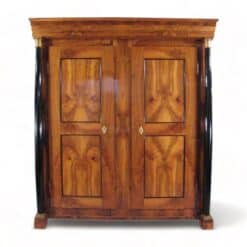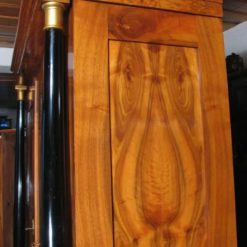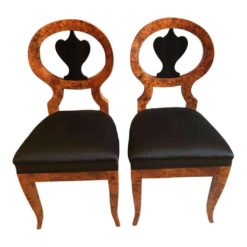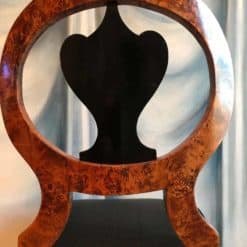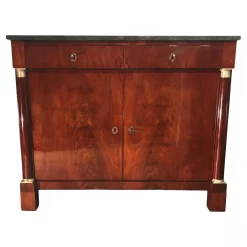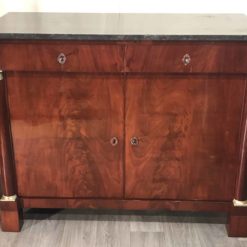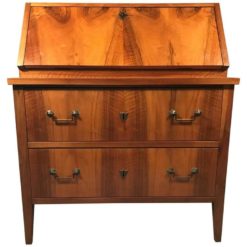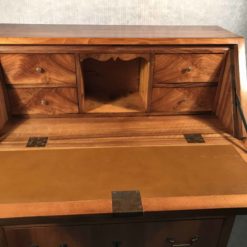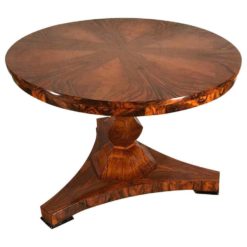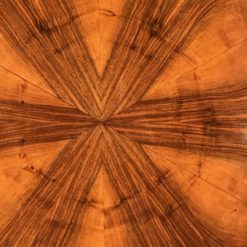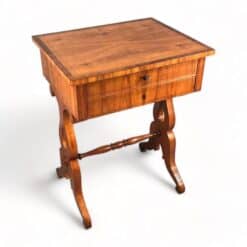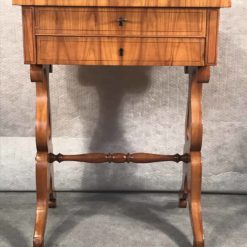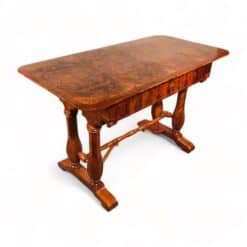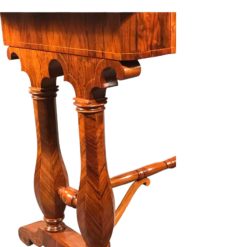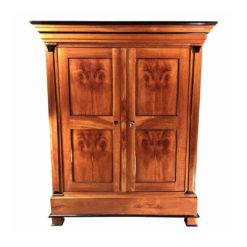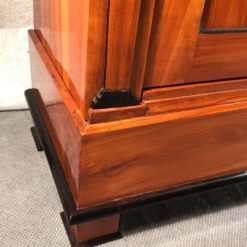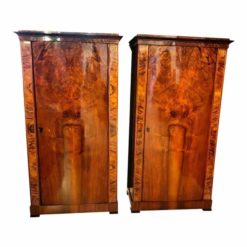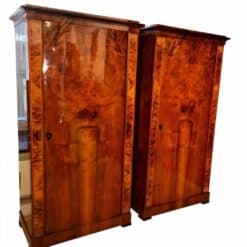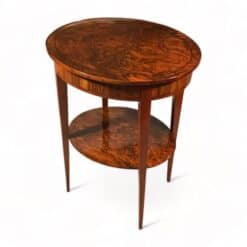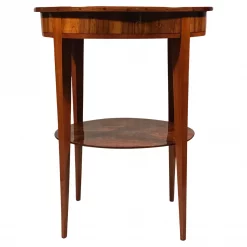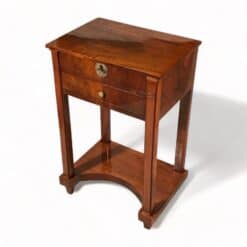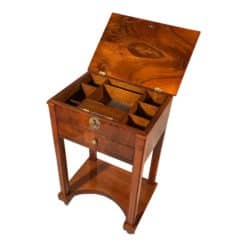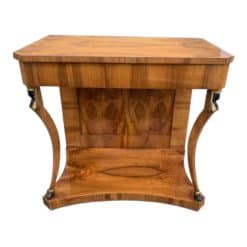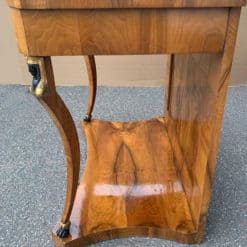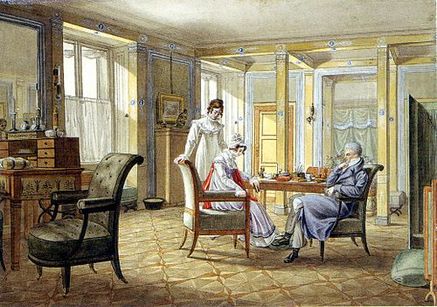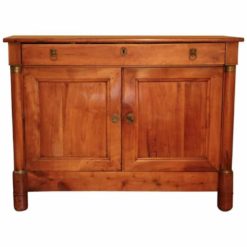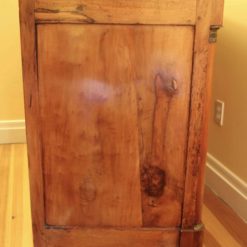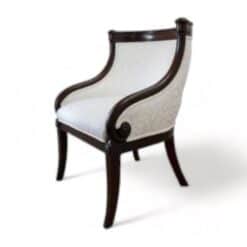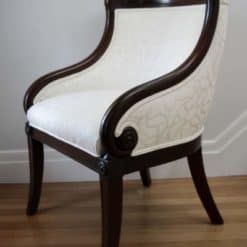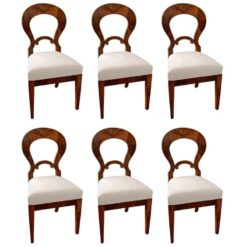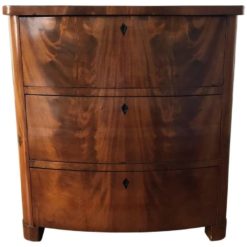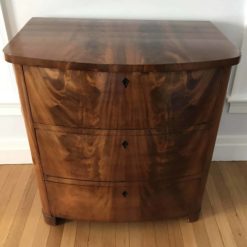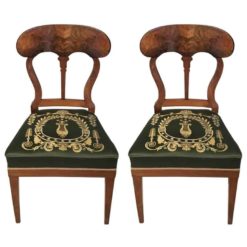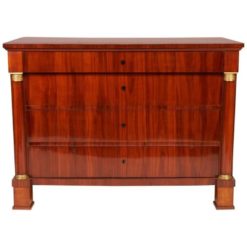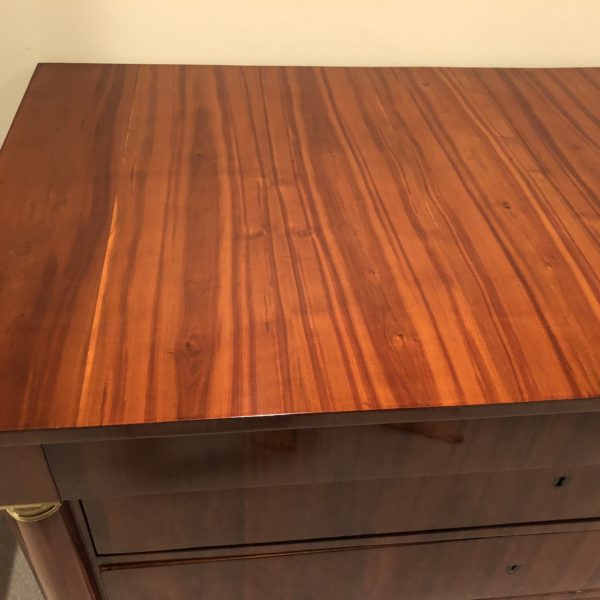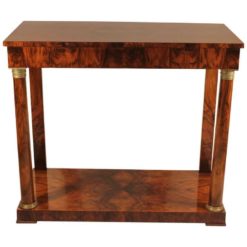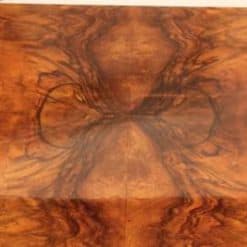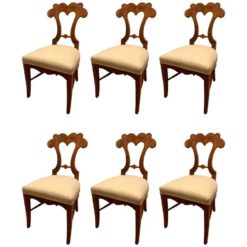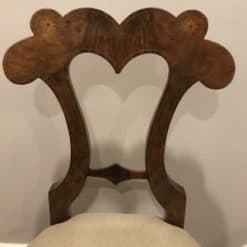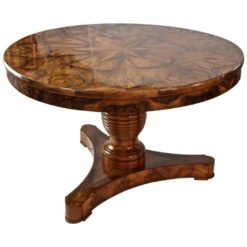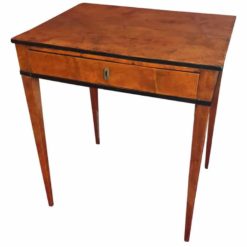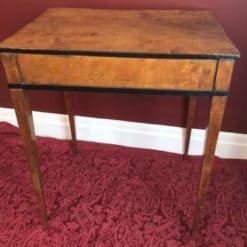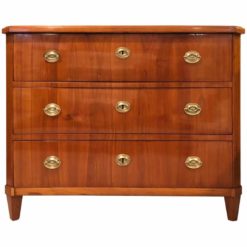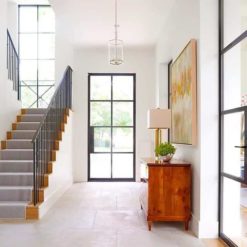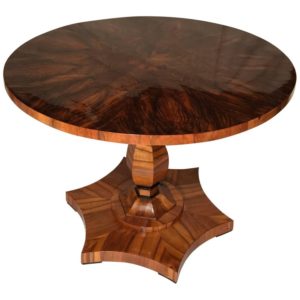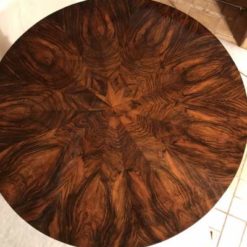Best Sellers
Biedermeier, Furniture, Style
Contrasting Biedermeier and Empire Style Furniture
While researching furniture options for your home, you may encounter a lot of terms and characterizations. Especially when browsing a site like Styylish, the distinctions between 18th and 19th-century furniture styles can get blurry. In this blog, we want to explore the difference between two of our most popular styles: Empire Style Furniture, and Biedermeier.
Empire style arose in early 1800s France under the First French Empire of Napoleon and embraced Greek, Roman, and Egyptian influence through the Neoclassical period. After the defeat of Napoleon and the congress of Vienna in 1815, the Biedermeier style largely developed in Germany, as an attempt to bridge the Neoclassical and Romantic styles.
Empire furniture focused on dark wood and marble tops. Biedermeier furniture, meanwhile, was one of the first styles of furniture created for middle-class Europeans. Through the catalog of some items at Styylish, we will explore examples of each style and imagine where they might fit in your home.
Empire Style Furniture: a Napoleonic Legacy
After the French Revolution, Napoleon took power as French Emperor. Empire style is named for him and his realm. It features many elements reminiscent of Ancient Greece and Ancient Rome, including the trademark columns you can often use to identify a Neoclassical style. Designers attempted to relate Napoleon to Roman Emperor Augustus when France transformed from a republic into an empire.
The heavy incorporation of Greek and Roman idealization invoked nationalistic pride and lent a sense of powerful prosperity to owners of the furniture style.
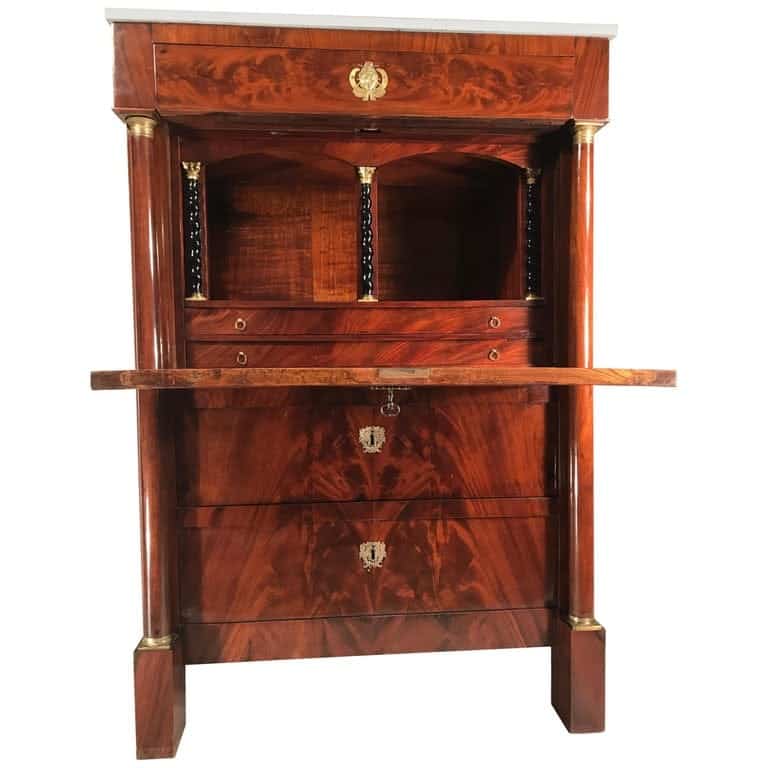
You can see this influence in a piece like this Empire Drop Front Desk. With large columns, brass elements, and dark mahogany veneer, this is a powerful statement piece. It conveys a sense of toughness and force, even 200 years after its creation. This tem has an inherent ability to draw the eye. That makes it a great pairing for light, modern accessories.
Empire-style painters, like Jacques Louis David, also used classical and Egyptian motifs to convey nationalistic fervor.
Biedermeier: A Case for Family Time
As designers moved away from the Empire period, the Biedermeier era focused on middle-class, family values. Here you can find furniture that highlights household activities, bonding activities, and the simple, important pleasures of home life.
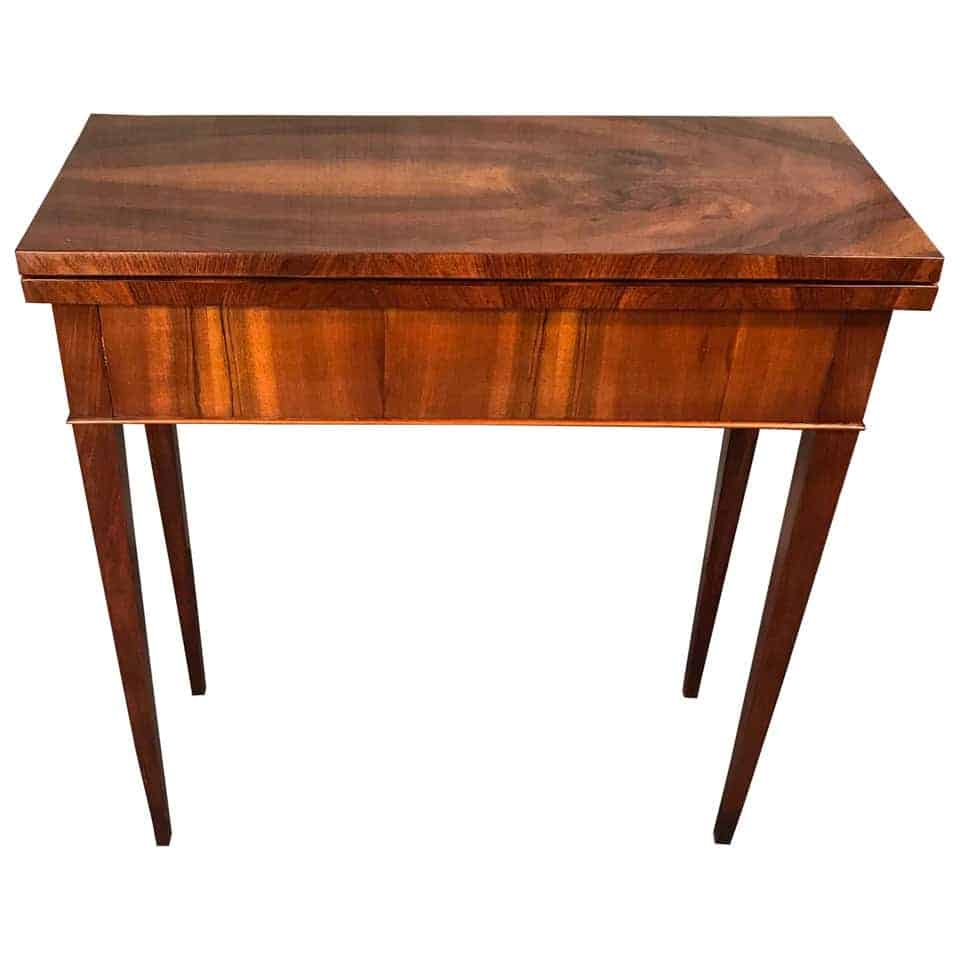
This is a staple difference between Biedermeier and Empire Style. Representing the early Biedermeier period around 1820, we can admire this 19th Century Walnut Game Table. The natural walnut wood grain makes this a delightful piece for a family gathering. The item is also uniquely adaptable with its fold-out top, for even the most space-conscious rooms.
Appreciating Home Life with Biedermeier
Biedermeier distinguishes itself shines by embracing common class values of the 19th century. Before the widespread use of sewing machines, people wanted space in their homes to sew and store materials.
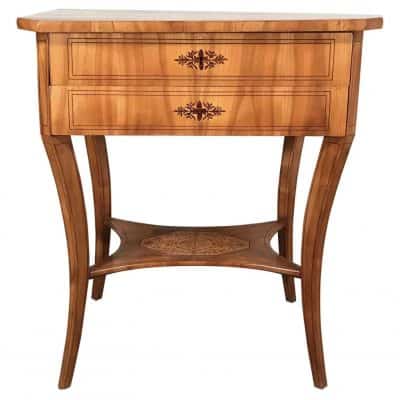
Imagine how lovely today it would be to have a designated nook in your home, dedicated to craftwork. Without even using it as a work table, a furniture item from Styylish can be a beautiful addition to a room. Take, for example, this Mahogany Biedermeier Sewing Table, constructed from Mahogany and featuring red velvet. While lighter wood is typical of Biedermeier furniture, mahogany can still be found as the featured wood of many items.
Classic Empire Furniture Characteristics
Something you’ll find typical of Empire-style furniture is the conveyed sense of stability and luxury. Heavy, dark woods are common, especially mahogany. Additionally, many pieces feature brass detailing.
Before we delve into examples of this 19th-century European style, it’s important to mention American Empire Furniture. That style differs from the French Empire style but was directly inspired by it. American Empire-style furniture is typically more robust that the elegant Neoclassicism of the French Style.
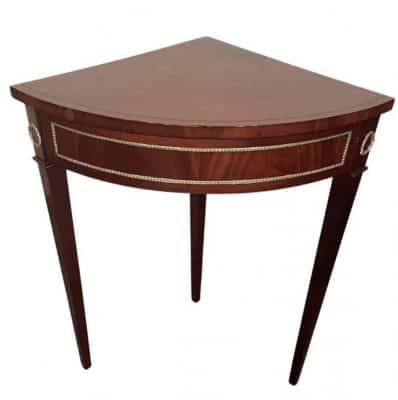
These elements can be found on this Corner Console Table, easy to fit in any corner of a room. You’ll find the difference between Biedermeier and Empire-style furniture lies in a lot of the details of this desk.
This table is a smaller and more delicate piece than some of the typically large and dominating Empire pieces. It nevertheless conveys elegant strength and power. It offers very straight leg lines, and a rigid quality, that makes it a perfect pairing for a softer floral display (perhaps a fresh bouquet of flowers in a simple vase).
The brass floral wreaths recall the common acanthus leaf, or rosette, a classic Roman symbol. This set of Four Empire Barrel Chairs could be perfectly aligned in a space with the corner table as well.
Featuring more curved lines, these chairs do not stand as imposing and tall as this rigid and geometric Empire Secretary Desk, but nonetheless convey Empire style and regal value.
The Elegant and Practical Wingback Chair
Originally known as an “easie” or “cheeked: chair, Wingback chairs are usually upholstered, with a high back, low seat, and signature side pieces, which often stretch down to the armrests.
Designed in alignment with the standards of Biedermeier, the practicality of this chair was in its ability to serve as a fireplace companion. The chair protects the user from cold drafts. While there are so many useful design elements of this item, there is no lack of high-quality sophistication.
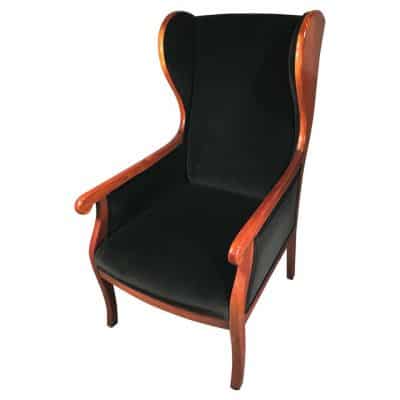
Biedermeier is certainly luxurious in and of itself. You could find an upscale addition to your home with something like this Biedermeier Wingback Chair. Complete with a high back, arm rests, and signature side pieces, this chair can easily invigorate a reading nook that needs an upgrade.
The simple curves and focus on natural shapes make this a classic Biedermeier piece. The classic and comfortable armchair with dark blue velvet upholstery would make for a treat in any home.
Find Aesthetic Success by Combining Styles
We’ve now emphasized the differences between Biedermeier and Empire furniture styles. Don’t be fooled though, their varying qualities can make them great to combine in a single room or throughout a home.
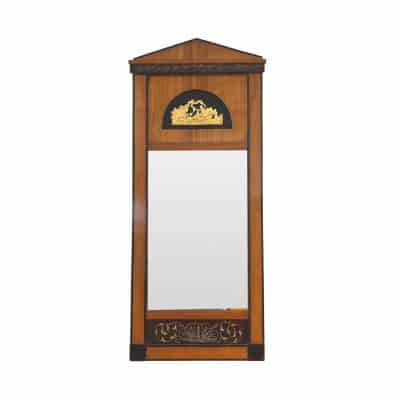
Envision this Biedermeier Cherry Mirror, originating from 1820 in southern Germany. The beautiful cherry veneer paired with ebonized columns makes this piece stand out, and adds a natural height to any space. Imagine placing this unique vintage piece in the corner of a bedroom, adding more reflective light to a peaceful space.
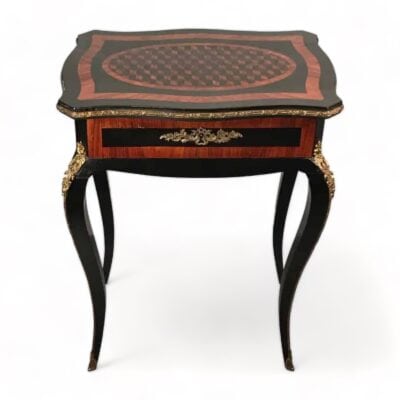
Now placed across the room, near a bed perhaps, you could find this Second Empire Side Table, France 1860-70. Elegant and curved, this piece would sit in beautiful conversation with the mirror, sharing ebonized elements. The dark shellac adds an almost mirrored effect to this piece, much glossier than we’ve seen before with many Biedermeier pieces. But paired together with the mirror, these two feel right at home together.
Empire Style Furniture and Biedermeier: Together in your Home
The patterns and tendencies of each era and style are marked by a range of details and aesthetic elements. While these classifications are important to pay attention to, know that your options in your home are not limited. Design periods can be successfully combined time and time again. Never be afraid of adding historical pieces to modern designs from the newest innovators.
Looking through Styylish’s inventory, you’re sure to find what you’re looking for, and maybe even learn something along the way!

